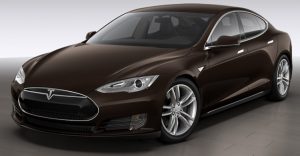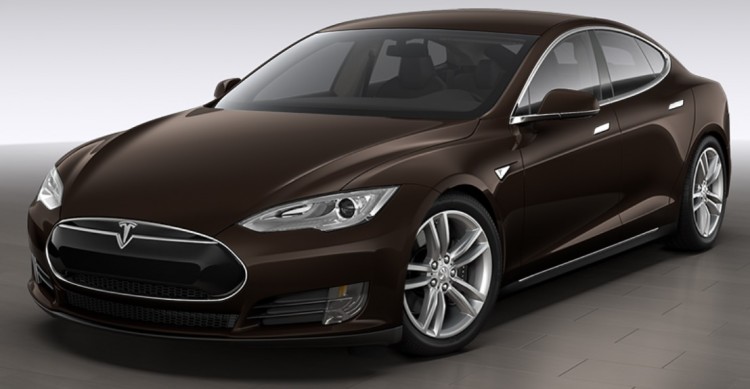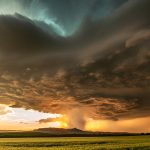Genesis Martinez (Full Name: Genesis Mendoza-Martinez), of Pittsburg, Died In Walnut Creek Tesla Car Accident Involving Fire Truck On Interstate 680 By The Treat Boulevard Offramp

WALNUT CREEK, CALIFORNIA (February 22, 2023) – A man identified as Genesis Martinez has tragically died in a Walnut Creek car accident when his Tesla collided with a fire truck on Interstate 680.
Contra Costa County officials are saying that the collision took place around 4:00 a.m. on Saturday. Genesis Martinez was driving a Tesla Model S when his vehicle collided with a fire truck parked on multiple lanes of the freeway after a previous collision.
Paramedics were called to the scene in order to help everyone that was injured. Firefighters had to cut the Tesla open in order to help the two occupants.
A passenger in the Tesla was injured and taken to the hospital. Tragically, Genesis Martinez died due to the severity of his injuries.
It remains unknown if the Tesla Model S was in “Autopilot” or “full self-driving” mode when the collision took place. Even if the Tesla was not engaged in autopilot or full self-driving, it remains unclear why the vehicle did not utilize automatic emergency braking.
Automatic emergency braking comes standard on all Tesla Model S vehicles. A full investigation into the deadly crash that killed Genesis Mendoza-Martinez remains ongoing at this time.
Liability For Walnut Creek Tesla Collisions With An Emergency Vehicle
Tesla has been widely praised and criticized for its efforts to advance what is possible with electric cars and self-driving technology. However, despite what the name might suggest, neither the “Autopilot” or “full self-driving” systems that Tesla vehicles utilize are capable of driving the vehicle without human intervention. This has led many people to criticize Tesla for failing to warn its customers about the potential dangers and shortcomings of using their driver-assist technology. There are many scenarios where Tesla vehicles have reportedly fallen short.
- Tesla vehicles in full self-driving mode have swerved into opposing lanes of traffic.
- Tesla vehicles in full self-driving mode have hit pedestrian test dummies.
- Tesla vehicles in full self-driving mode have driven past “Do Not Enter” signs.
In particular, Tesla vehicles engaged in Autopilot were involved in a number of collisions with emergency vehicles. According to the National Highway Traffic Safety Administration, Tesla vehicles engaged in Autopilot have been involved in 16 collisions with emergency vehicles from 2014 to June, 2022. These accidents have resulted in 15 injuries and one death. In the last week, Tesla has recalled 362,000 U.S. vehicles over concerns regarding their full self-driving software.
Depending on the facts of any case, Tesla could face liability for any collision involving its vehicles. Car companies have a legal obligation to create products and software that are reasonably safe. When a car company fails to make a product reasonably safe, this could form the basis of a product liability claim. A product could be unsafe because it had inherent design defects. Or a product may be unsafe because a car manufacturer failed to warn consumers about the non-obvious dangers associated with their technology.
According to one lawsuit in Texas, several police officers were injured by a Tesla Model X engaged in Autopilot that hit their stopped vehicle. As outlined in court documents in that case, “Tesla’s blatant refusal to adopt additional safeguards or to fix the issues with its Autopilot system demonstrate a lack of supervision and oversight of Tesla’s Autopilot system.” Attorneys go on to claim that Tesla had knowledge of the dangers and risks associated with its Autopilot system.
A government entity that owned a fire truck could also potentially be held liable for an accident when their vehicle is blocking lanes of a freeway. Consider, for example, the California Court of Appeal case of Brown v. County of Los Angeles. In that case, the plaintiff was killed after his vehicle collided with a Los Angeles County fire truck that was blocking multiple lanes of the freeway around 3:15 a.m. on October 10, 2010. The fire truck operators were not utilizing warning lights, flares or reflectors when the collision took place.
The California Court of Appeal sided with the plaintiff and reversed an earlier judgment to dismiss the case. Though California law does provide immunity for the conduct of officials who are fighting fires, another provision of California law creates exceptions both to fighting fires and the operation of a motor vehicle. In short, the negligent actions of firefighters who are not actively fighting a fire could form the basis of a negligence claim. There are many steps that should be taken after any Tesla collision with an emergency vehicle.
- The footage that the Tesla captured prior to the crash should be examined.
- The software that a Tesla vehicle used should be reviewed.
- The actions of firefighters that parked a vehicle on the freeway should be understood.
- A thorough investigation should be conducted.
It can be difficult to know where to begin after a collision. To make matters worse, both car companies and fire departments will do everything that they can to deny all liability for a collision. They will often refuse to be transparent about a crash unless obligated to do so. However, the family of any person that died in a crash deserves to know what happened. They also have the ability to seek some measure of accountability through a civil claim.
Investigating A Walnut Creek Tesla Collision With An Emergency Vehicle
We at TORKLAW extend our deepest condolences to the family of Genesis Martinez. It is our sincere hope that the injured passenger will be able to make a full recovery. There are so many questions that need to be answered. Was the Tesla involved in this crash in Autopilot or full self-driving mode? Why did the Tesla apparently malfunction and fail to engage its automatic emergency braking capability? The media has been quick to blame the driver of the Tesla, but that is 100% wrong. Had the Tesla Model S functioned as advertised and designed, this tragedy may have easily been averted.
Do you need more information about any accident involving a Tesla? Our team of consumer safety advocates are here for you. We care deeply that accident victims are aware of their rights and that car companies are doing everything in their power to help keep their vehicles safe. Whether you just have legal questions or need a free, independent investigation into any collision we are here for you. You are always welcome to reach out to us anytime at (888) 441-4991.


